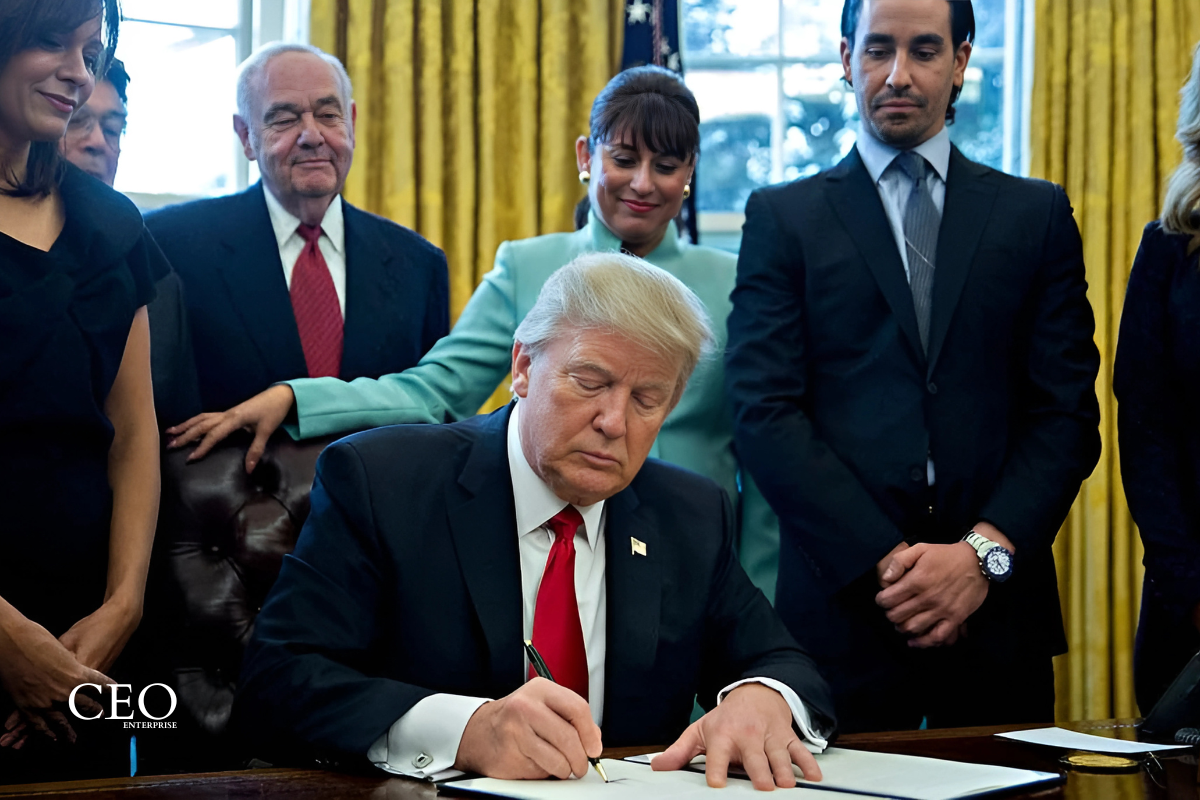What the Trump Presidency Means for Small Businesses Donald Trump’s return to the White House in January 2025 has sparked both hope and apprehension among small business owners across the United States. Advocates anticipate economic growth, tax relief, and reduced regulations, while critics warn of potential challenges stemming from policies…

What the Trump Presidency Means for Small Businesses
Donald Trump’s return to the White House in January 2025 has sparked both hope and apprehension among small business owners across the United States. Advocates anticipate economic growth, tax relief, and reduced regulations, while critics warn of potential challenges stemming from policies like tariffs and mass deportations. This article delves into how Trump’s key policy proposals—including trade tariffs, tax cuts, labor reforms, and regulatory changes—could impact small businesses.
Tariffs: A Double-Edged Sword for Small Businesses
- The Push for Domestic Manufacturing
One of Trump’s hallmark policies is imposing high tariffs on foreign goods. These tariffs aim to incentivize domestic manufacturing, reduce dependency on imports, and boost the U.S. economy. For small businesses, this shift could shorten supply chains, insulate against global disruptions, and create new opportunities in domestic markets.
- Challenges of Tariff Implementation
However, tariffs also pose significant risks. Increased import costs can raise overheads for businesses reliant on foreign materials, potentially driving up consumer prices. Mark Hamrick, a senior economic analyst at Bankrate, highlights this concern: “Small businesses dependent on imports may struggle to absorb higher costs, leading to financial strain.”
- Strategic Tariff Applications
Howard Lutnick, Trump’s pick for Commerce Secretary, advocates “strategic tariffs” on goods that can be produced domestically. While this could benefit local manufacturers, the lack of existing production capacity in the U.S. for certain goods remains a bottleneck.
Mass Deportations: Filling Jobs or Creating Labor Shortages?
- Trump’s Immigration Plan
Trump has pledged to launch mass deportations of undocumented immigrants, arguing this will free up jobs for American workers and address wage suppression. Vice President-elect J.D. Vance emphasized that undocumented labor has discouraged businesses from hiring American workers at fair wages.
- Potential Economic Fallout
The impact of deporting an estimated 8.3 million undocumented workers—comprising 4.8% of the workforce—could be profound. Industries like agriculture, construction, food service, and caregiving heavily rely on immigrant labor. A sudden labor shortage could disrupt operations, increase costs, and exacerbate existing challenges like the housing crisis.
- Balancing Act
While the administration sees mass deportations as a path to workforce revitalization, experts caution against overlooking the negative repercussions. Hamrick warns, “Widespread deportations could reduce demand for goods and services, affecting businesses nationwide.”
Tax Reforms: Relief for Some, Challenges for Others
- Corporate Tax Cuts
Trump’s promise to reduce the corporate tax rate from 21% to 15% applies exclusively to businesses based in the U.S. and employing American workers. This policy aims to incentivize local hiring and boost wages but could financially strain companies reliant on offshore labor.
- Eliminating Taxes on Tips and Overtime
Proposed tax cuts on tips and overtime income could provide much-needed relief for workers in the service industry and hourly jobs. For small businesses, this could ease recruitment challenges and increase workforce satisfaction. However, it might also incentivize longer work hours, potentially impacting work-life balance.
- Replacing Federal Income Tax with Tariffs
Trump’s controversial proposal to eliminate federal income tax and replace it with tariff revenue could significantly increase take-home pay for workers. However, it raises concerns about its feasibility, as federal income tax accounts for 51% of government revenue. Without careful planning, this shift could lead to higher costs for goods and services.
Cutting Regulations: Streamlining or Stifling?
- Regulatory Rollbacks
With Elon Musk and Vivek Ramaswamy spearheading the Department of Government Efficiency (DOGE), Trump’s administration is set to slash regulations from agencies like the EPA and SEC. The goal is to reduce bureaucratic hurdles and foster innovation.
- Risks for Small Businesses
While deregulation might benefit large corporations, small businesses could face increased competition. “Big businesses could gain even more dominance, potentially overshadowing small enterprises that are the backbone of U.S. innovation and economic growth,” Hamrick notes.
Tackling Inflation: A Focus on Energy
- Lower Energy Costs
Trump’s plan to lower energy prices centers on ramping up domestic oil production. Reduced energy costs could decrease manufacturing, transportation, and operational expenses for businesses, offering a reprieve from inflation-driven pressures.
- Challenges Beyond Policy
While Trump’s focus on energy independence is promising, external factors—such as global demand, geopolitical tensions, and climate-related disruptions—will continue to influence energy prices. “The complexity of the energy market makes it challenging for any administration to exert complete control over prices,” explains Sarah Foster of Bankrate.
Key Takeaways for Small Businesses
- Adapt to Tariff Policies: Businesses should explore domestic sourcing options to mitigate potential cost increases from tariffs.
- Prepare for Labor Market Shifts: Industries reliant on immigrant labor must plan for potential workforce shortages and rising wage demands.
- Leverage Tax Benefits: Take advantage of proposed tax cuts to optimize cash flow and invest in growth.
- Stay Agile Amid Regulatory Changes: Monitor policy updates to understand their implications on compliance and competition.
- Manage Energy Costs: Invest in energy-efficient practices to shield against volatile energy prices.
Navigating Opportunities and Challenges
Trump’s second term promises significant changes for small businesses, with policies designed to stimulate the economy and empower American workers. However, these initiatives also come with risks that businesses must navigate carefully. By staying informed and proactive, small businesses can position themselves to thrive in the evolving economic landscape. As the 2025 administration unfolds, adaptability and resilience will be key to success.
